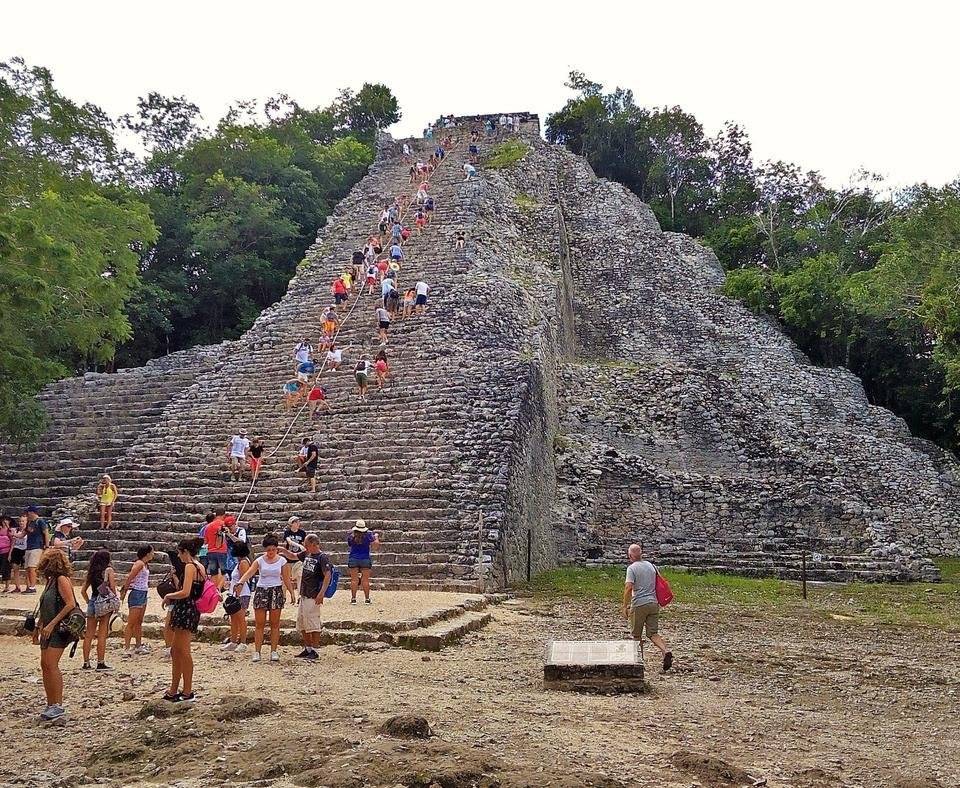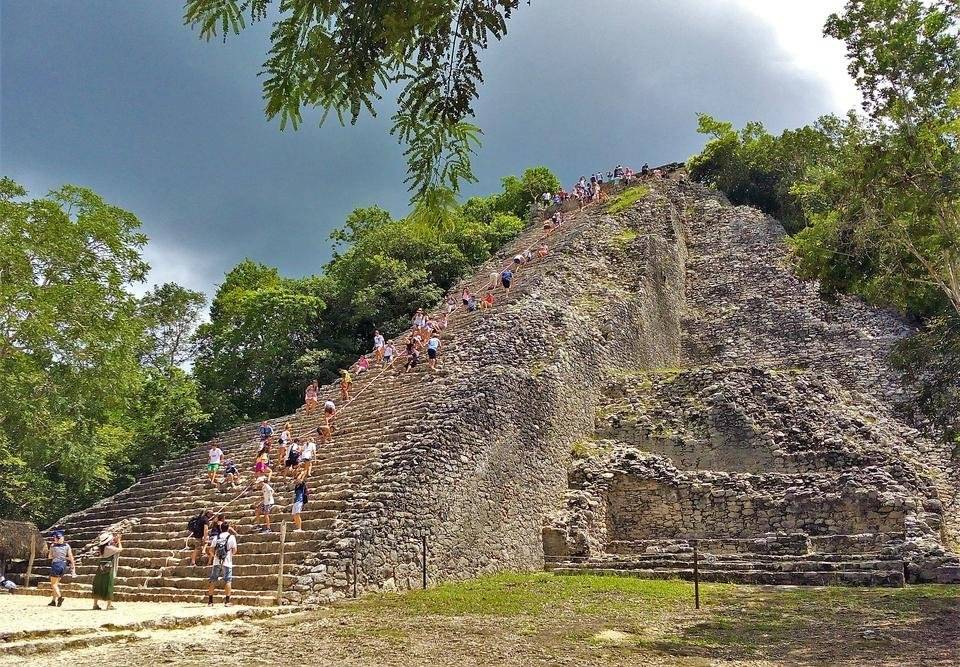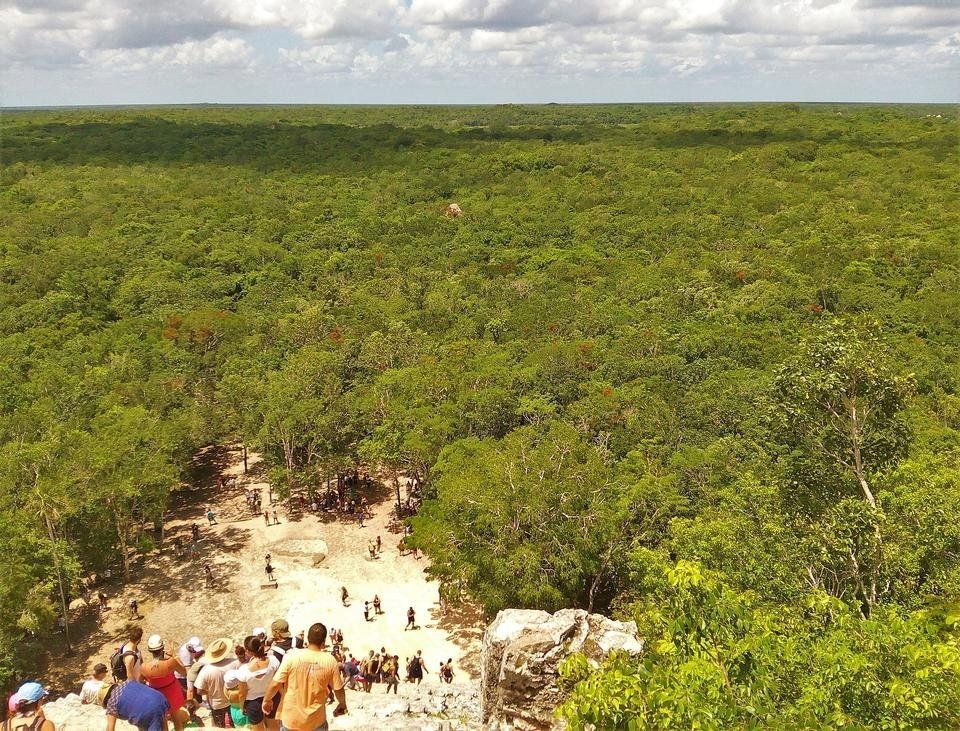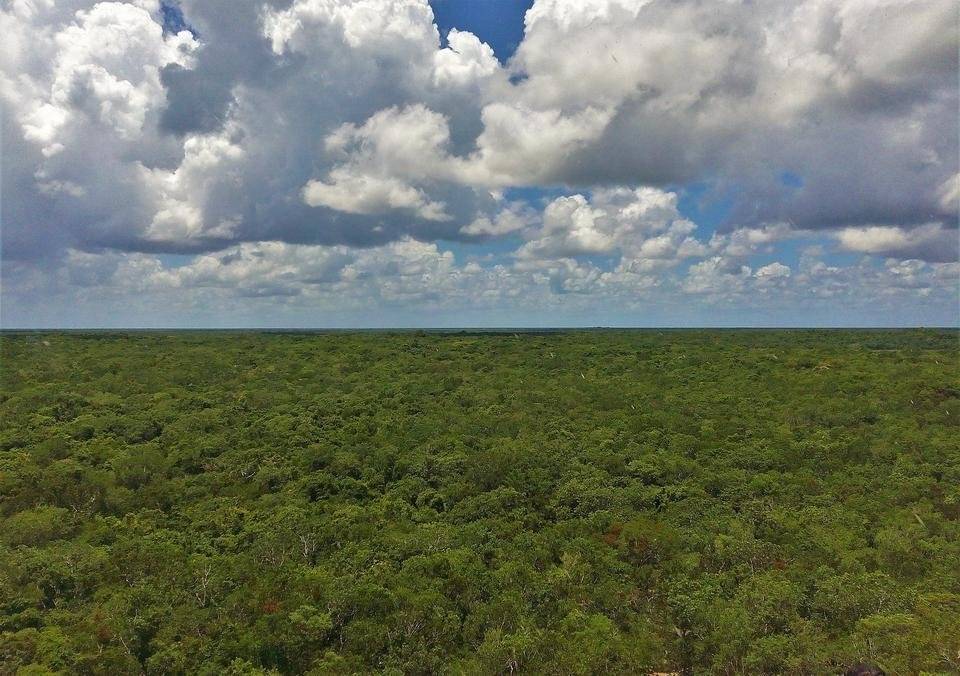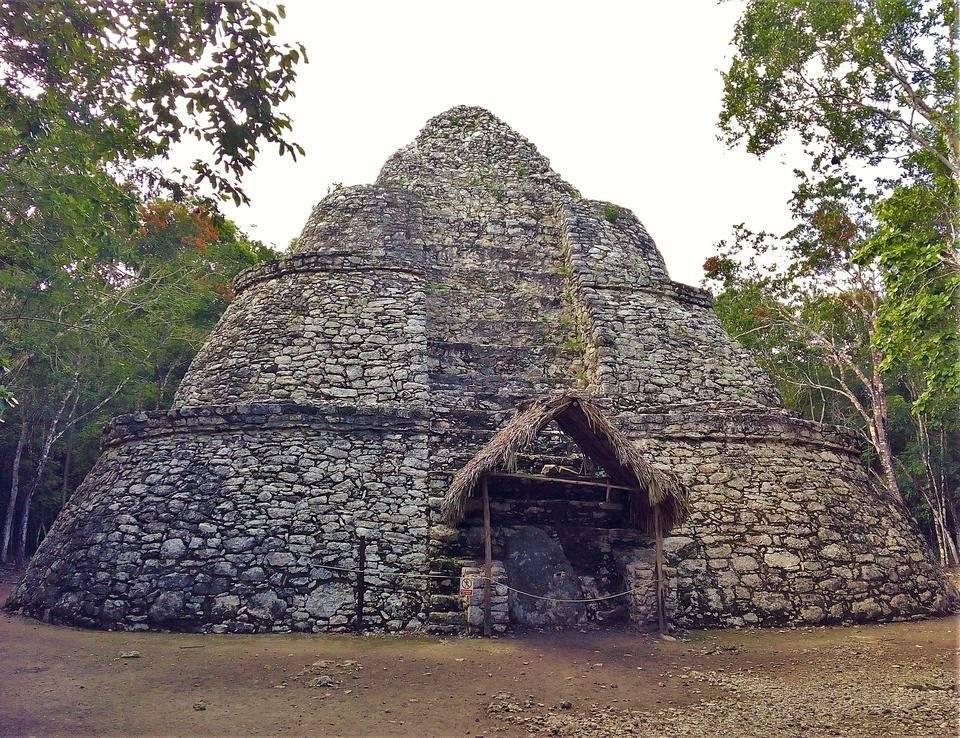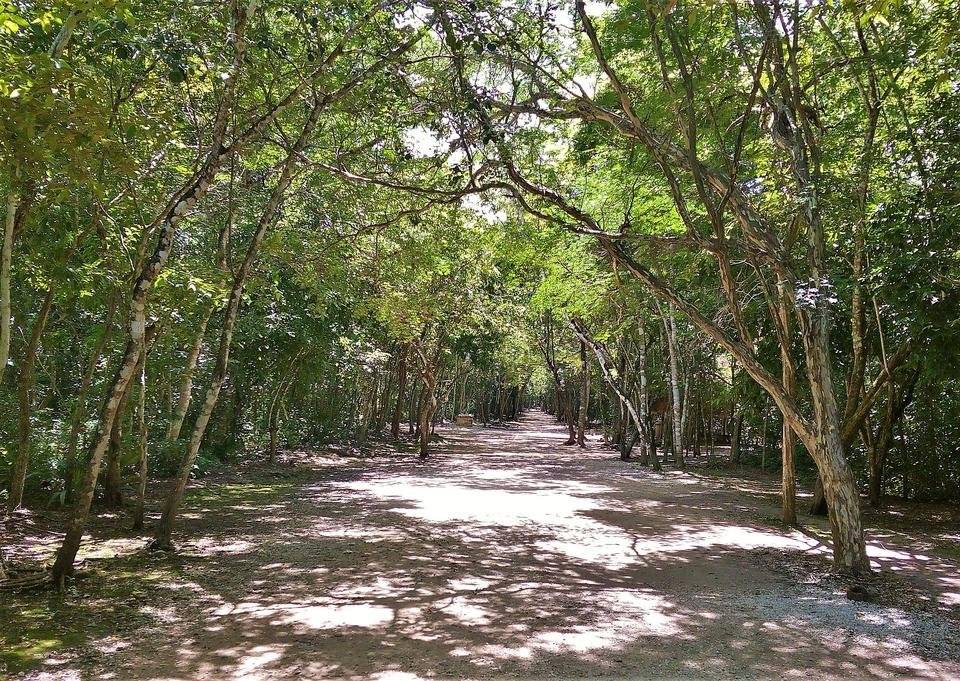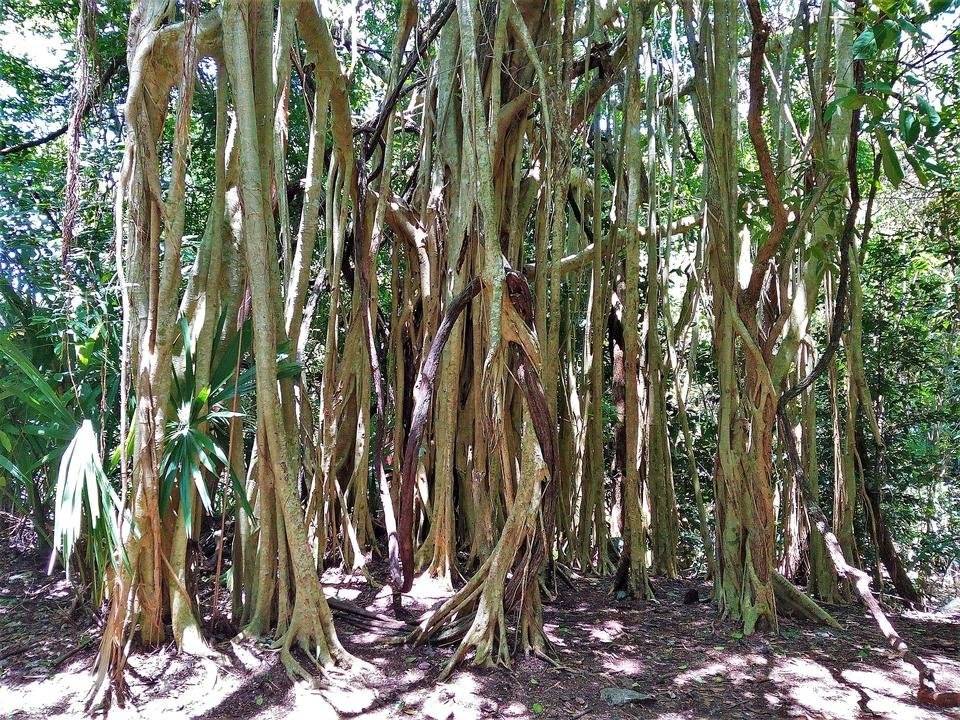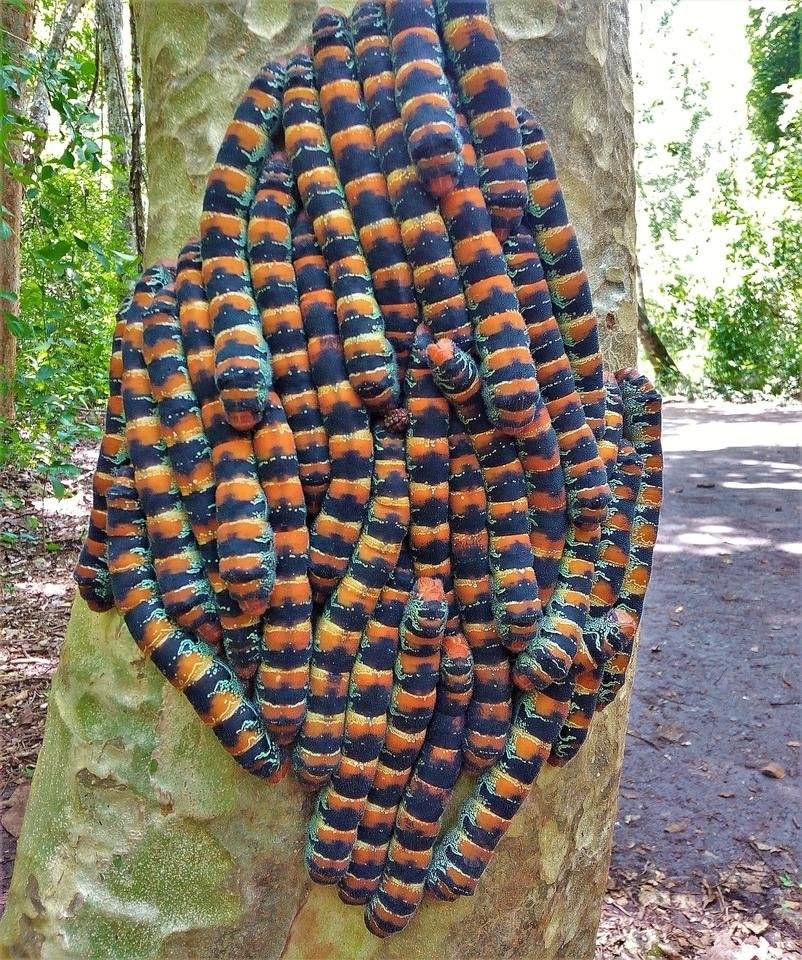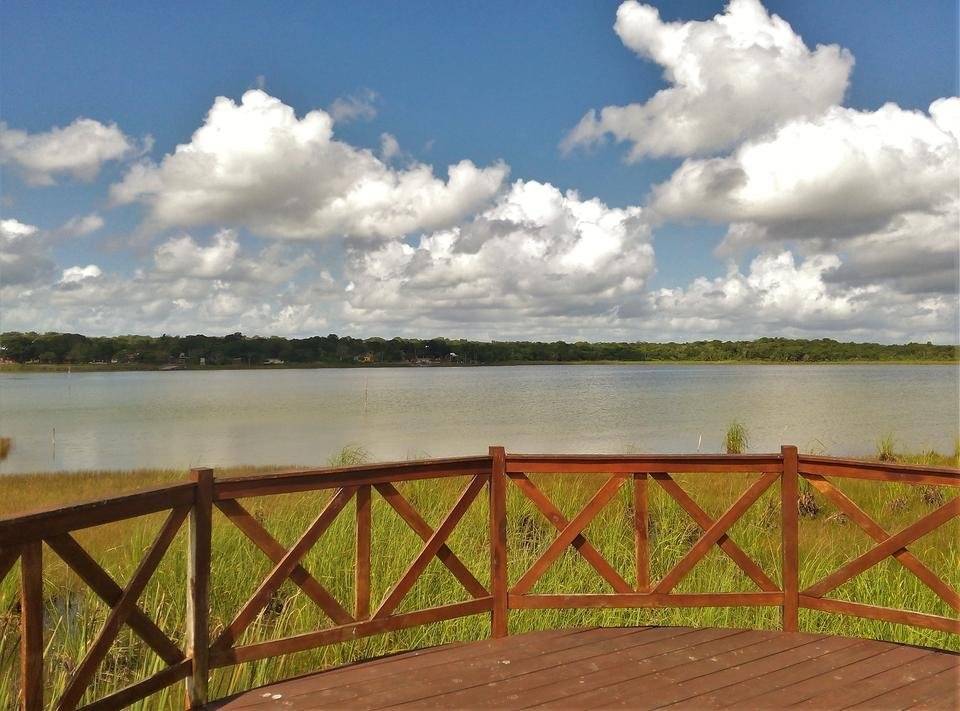Hi there my Steemit friends and followers!
I prepared another episode of my travel series called Beauties of Yucatan for you today. After introducing you to the beautiful Ik Kil Cenote last week, I am going to take you to one of the most impressive historic places in all Mexico - the magnificent ancient Mayan ruins of Coba.
Front view of the Nohoch Mul Pyramid, the most dominant architectural landmark of the complex.
Located in the Mexican state of Quintana Roo, some 44 km (27 mi) northwest of Tulum, a popular tourist town on the coast of the Mayan Riviera, Coba used to be a prominent ancient Mayan city and one of the main centers of the Mesoamerican civilization between the 1st and 7th century.
As you can see in the photos, tourists are allowed to climb up to the very top of the pyramid that stands impressive 42 m (137 ft) tall.
It is estimated that the city of Coba had at least 50,000 (but possibly even much more) inhabitants during its golden age, making it one of the largest ancient Mayan cities in all Central America.
It is quite a strenuous climb, especially under the scorching Mexican sun, but if you make it to the very top of the pyramid, you will be rewarded with some breathtaking views.
The aerial view of the lush green jungle surrounding Coba is just priceless.
The built-up area of Coba covered more than 80 sq km (31 sq mi) and it included a number of impressive buildings, temples, pyramids, causeways and other pieces of ancient Mayan architecture.
Another interesting pyramid found on the site.
The individual structures are up to several kilometers apart. There are basically 3 ways of getting around the complex - you can walk, rent a bike or you can use a bike taxi.
The pathways connecting the ruins are nicely shaded by the dense tropical vegetation so it really is possible to just walk around the place.
The Coba Ruins receive over 700,000 visitors each year, making it one of the most visited old Mayan sites in the country. There are several hotels and many restaurants, souvenirs shops and other stands scattered on the site and its vicinity.
Apart from the impressive architectural landmarks of the place, I was also intrigued by the local flora...
...and fauna. These huge colorful larvae are caterpillars of the giant silk moth. We saw them on many trees all over the place.
Right next to the main entrance to the Coba Ruins, just across the road, there is the beautiful Lake Coba.
It looks clear and refreshing but swimming is definitely not recommended here as the lake is home to a large population of crocodiles. We saw a couple of them while just walking along the shore.
The admission fee to the Coba Ruins was just some 70 Mexican pesos (about 3.5 USD) per person (as of summer 2017) and I must say it was totally worth it. The Coba Ruins are not as famous and crowded as the ones at Chichen Itza but to me, they were just as impressive and beautiful, if not even more. You can easily spend the whole day just hanging around this magnificent complex with a very special atmosphere.


